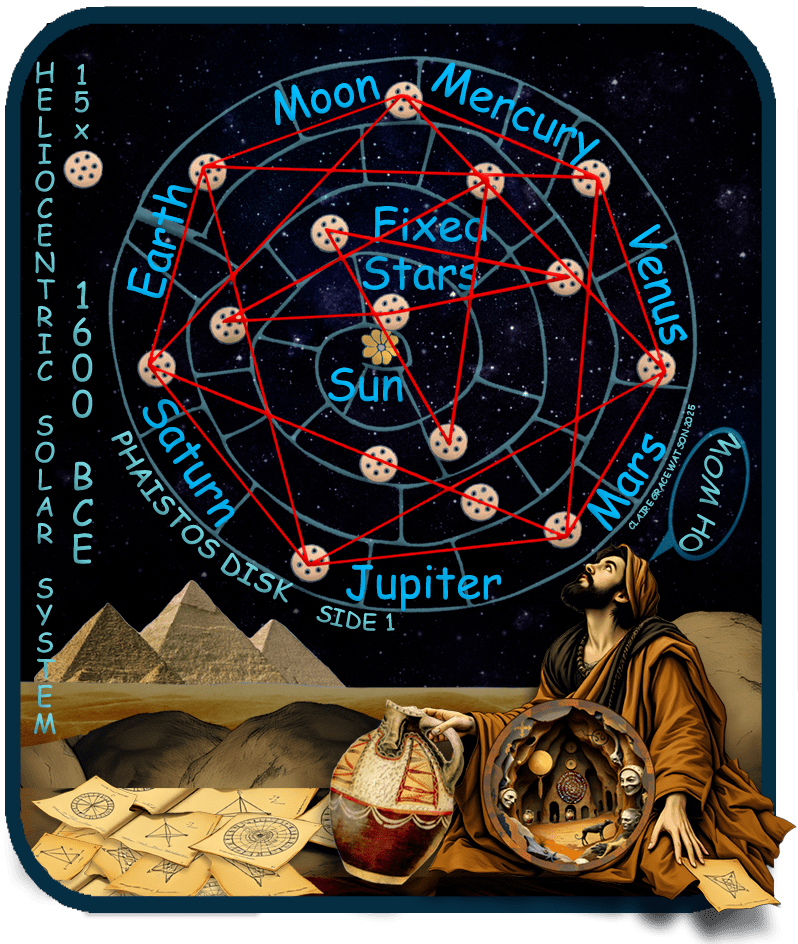
Preserved on the Phaistos Disk is a treatise etched in clay, using pictographs and spirals, about how geometry, mathematics, and astronomy - the integrated sciences of the Minoan world and the sacred sciences of the first Hermeticists - were used to propose the first recorded heliocentric theory of the solar system/universe and the first recorded theory that the sun is a star.
The Phaistos Disk, excavated in 1908, is an artifact of antique Hermeticism, perhaps the only one, that was created more than 3,200 years before that kind of intellectual pursuit finally broke through its social suppression to acquire that name. Without it we would have no way to excavate their scientific accomplishments or their beliefs about the universe. This 3,600-year-old terra cotta pottery art masterpiece is the most famous undeciphered artifact in archaeology, and likely to remain so as this solution presented here will find no more acceptance than Hermeticism did in the groves of academe or in the gen pop. Ah, Aten! As it once was, so it still is. And, probably as it should be. Some things are occulted for a reason. (I'm looking at you, Trismegistus.)
At about 6" diameter it is only a little larger a DVD, and packed just as tight with content about a lost civilization, but is more technologically advanced in that it has a matching second side full of additional information. All that is needed to gain access to the lost world is the key, but a 1200-year-gap, perhaps more, exists between when the Disk was created and when the ancient Greeks began to document the development of the sciences preserved by the Disk.
Serving as the bridge to the Minoan world, those documents would bring the Gnosis forward to eventually be called Hermeticism, in another 2,000 years after that in the 17th century CE. The artifact preserves the blending of Minoan and Egyptian influences involving the very beginning of this serious scientific thought about the universe and about the approach of gaining spiritual knowledge - Gnosis - from a scientific orientation.
Ultimately, the Disk is a preservation of a Mediterranean Bronze Age math argument that the universe is a math structure, in fact a math maze, comprehensible through the integrated sciences of mathematics, geometry, and astronomy.
When the ancient Hermeticists, or whatever they called themselves, of the Minoan Crete and the late Pharaonic Egypt world looked into the Mediterranean Bronze Age skies at night, they saw more than just stars and planets. They saw the Absolute - that which is unchanging and eternal. Recognizing its ubiquitous nature, they looked for it in other parts of their world and found it in math, geometry, astronomy, and the Great Pyramid.
Only the Hermeticists, of which there were many and likely a cult, pursued this intellectual inquiry, as the general population was focused differently, their beliefs forming the basis of Greek mythology, in a parallel development. The Hermeticist and their studies informed the technology of that age, as they also were scholars, artisans, architects, inventors, merchants and, in this particular instance, pottery artists.
Observe the Phaistos Disk, the most famous of the art creations to come from the Minoan Crete world. Imagine you are an ancient Hermeticist looking up into the night sky. There at the center is the fixed North Star, unmoving while the entirety of the cosmos circles around in a spiral. Well, what do you make of that? Note the locations of the etched pictographs, unchanging like the stars, their positions absolute.
Locate the 15 matching pictographs of a circle containing the points of a hexagram. Beside most of them is a Warrior pictograph, encouraging the idea that the hexagram circle pictograph is a Shield. In one instance, a Warrior is holding one of these Shields. The instruction seems to be to consider the Shields as points and connect them with lines, as in plane geometry and as in the Minoan way of creating our 48 original constellations.
On following that instruction, suddenly revealed is that North Star with the cosmos moving around it. Surrounded by 7 Shields on the outside spiral, the configuration, in terms of plane geometry, is a pentagram surrounded by a heptagram, or in math is, 5 (pentagram), 6 (hexagram), and 7 (heptagram), and in terms of the sacred geometers of the modern age it is the revered "pent-hept."
Bronze Age shields were elaborate. Is this perhaps a shield design? It is certainly a large, hidden pictograph. It also represents, in an astronomy syncretism, the blue star Sirius, the heliacal rising of which was their method of timekeeping. The star is surrounded by 7 known "planets" of their world, historically recorded to be Sun, Moon, Mercury, Venus, Mars, Jupiter, and Saturn. But here (below), the Sun appears in the center, where Sirius rises with it (heliacal rising) at the beginning of each new year, and on the outside spiral, with its 12 line segments, are the planets:Earth, Moon, Mercury, Venus, Mars, Jupiter, and Saturn, all revolving around the Sun...in the Bronze Age, 3,100 years before they are supposed to.
Nicolas Copernicus (1473 - 1543 CE) is credited with the discovery that planets revolve around the sun. For maintaining the heretical Corpernican heliocentrism, Galileo (1564 - 1642 CE) was condemned, threatened with torture, and placed under house arrest by the Catholic Church in its failed attempt to suppress the ancient enlightened perspective that Earth is not the center of the universe for, if it is not, their power as God's representatives on Earth is in jeopardy, as well as their tithes.
But 1000 years before that, heliocentrism was regarded as a radical theory and apparently suppressed by astronomers through the ages who could see no value in supporting it, if they had ever heard of it. The Greek astronomer Aristarchus of Samos (c.310 - c.230 BCE) proposed such a theory, believed to be based upon a theory by Philolaus of Croton (c. 470 - 385 BCE), Greek Pythagorean, regarding a fire at the center of the universe which Aristarchus believed to be the sun.
In a temporary breakthrough in the continuous social suppression of this enlightened idea, Archimedes of Syracuse (c.287 - c.212 BCE) writes to King Gelon regarding Aristarchus' theory. Though King Gelon is made aware it, the theory of heliocentrism becomes occulted again for 1000 years:
You are now aware that the "universe" is the name given by most astronomers to the sphere the centre of which is the centre of the earth, while its radius is equal to the straight line between the centre of the sun and the centre of the earth. This is the common account as you have heard from astronomers. But Aristarchus has brought out a book consisting of certain hypotheses, wherein it appears, as a consequence of the assumptions made, that the universe is many times greater than the "universe" just mentioned. His hypotheses are that the fixed stars and the sun remain unmoved, that the earth revolves about the sun on the circumference of a circle, the sun lying in the middle of the orbit, and that the sphere of the fixed stars, situated about the same centre as the sun, is so great that the circle in which he supposes the earth to revolve bears such a proportion to the distance of the fixed stars as the centre of the sphere bears to its surface. (Archimedes)
That description, on diagram, would look like this:
It appears that 1,300 years before Archimedes' letter to King Gelon, Minoan astronomers speculated that Earth is a planet and that the planets revolve around the sun "on the circumference of a circle," and remain in their orbit because they are connected to each other. Theorized on the Phaistos Disk is that the connection is not the force of gravity, of which they knew nothing, but is the force of geometry, of which they were masters. The ancient science of geometry had built the greatest of all structures, at least 1,600 years before the Phaistos Disk was created, the Great Pyramid. For all anyone knew, except perhaps the Hermeticists, it had been there forever.
The geometry force connecting the planets to each other is a heptagon, because the math involved is 7. Further, the geometric configurations above allow for the possibility Minoan astronomers theorized that the stars, different from the planets in that they are fixed, are the same type of heavenly body as the sun.
In the Egyptian sense, it is SIRIUS the Dog-Star, the Star or Isis-Sothis. Around it are the Stars of the
Seven Planets each with its seven-fold counterchanged operation. 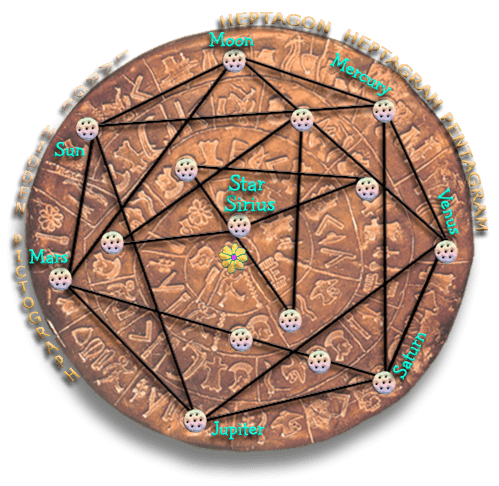
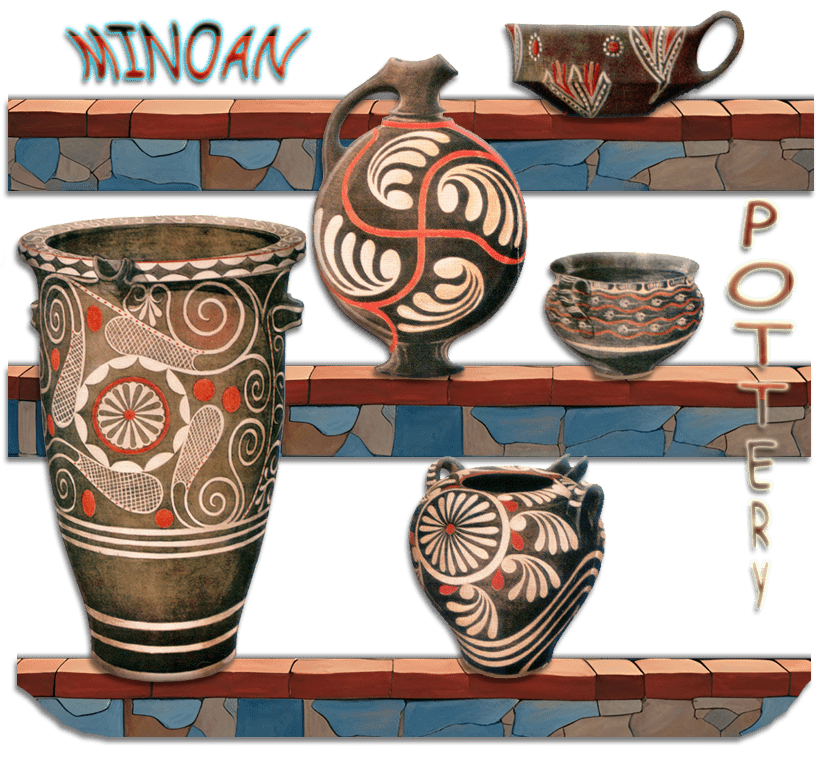
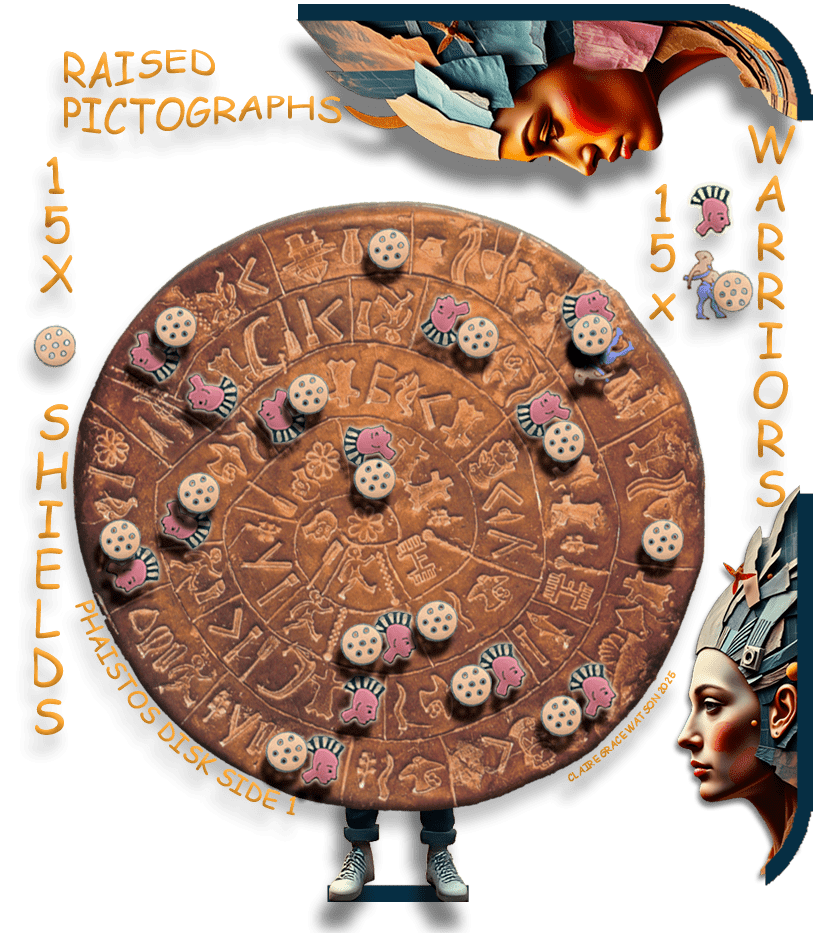
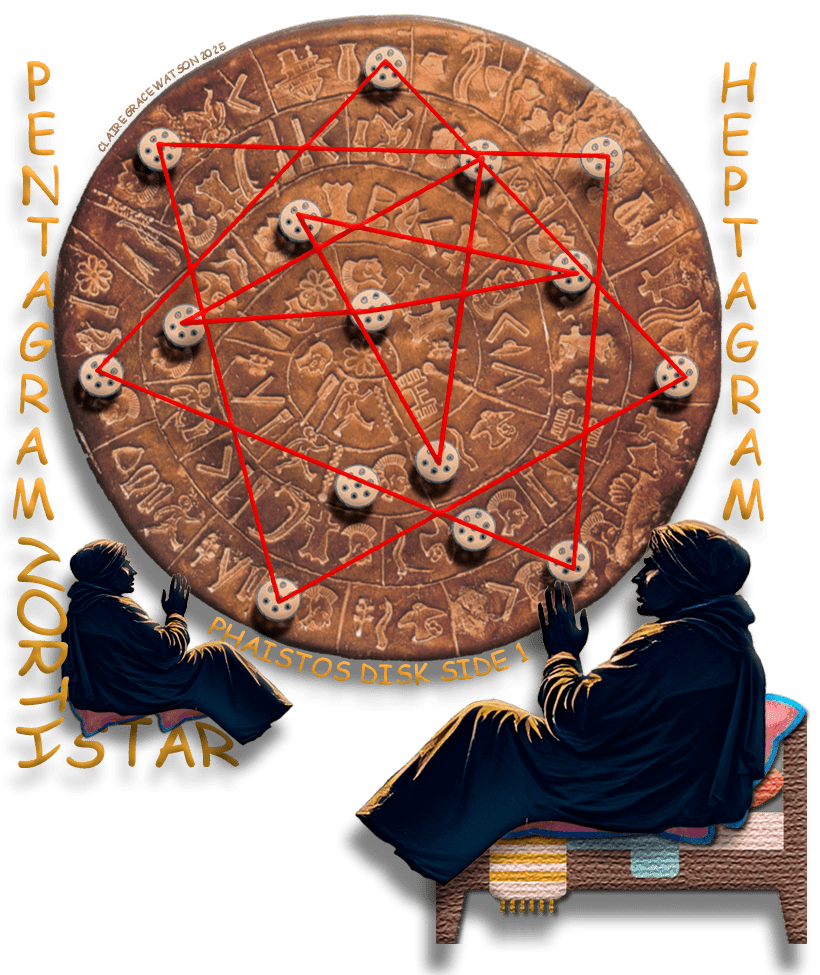

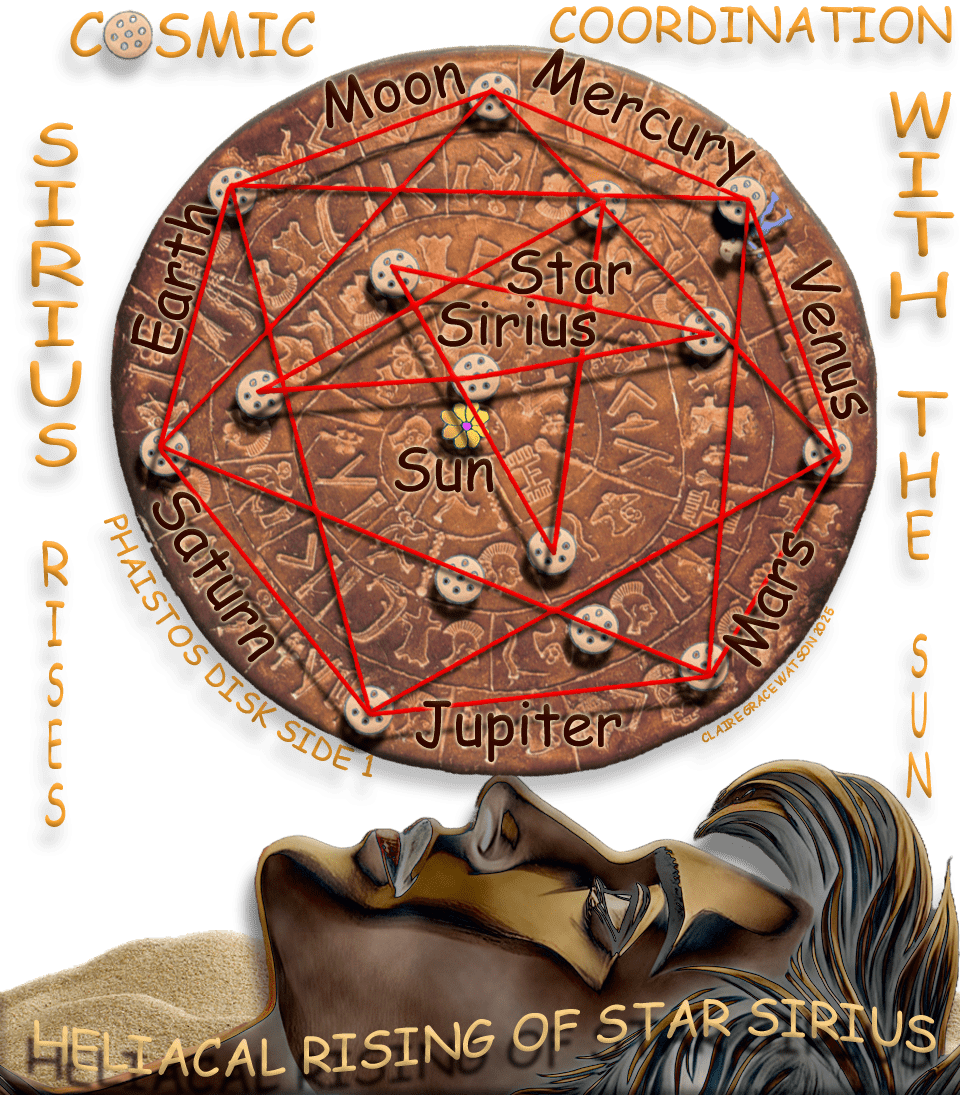
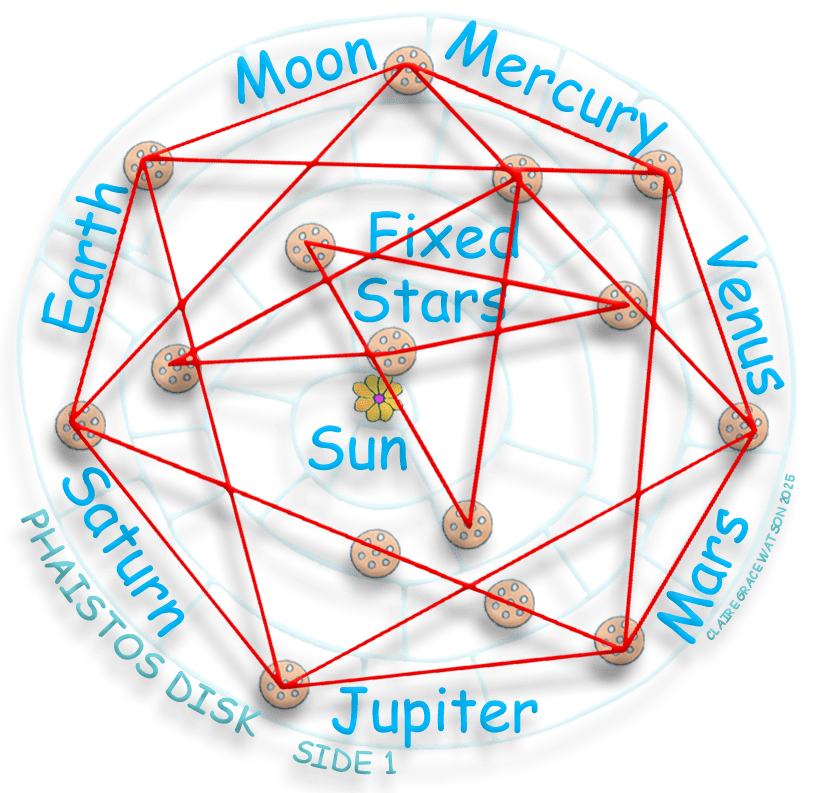
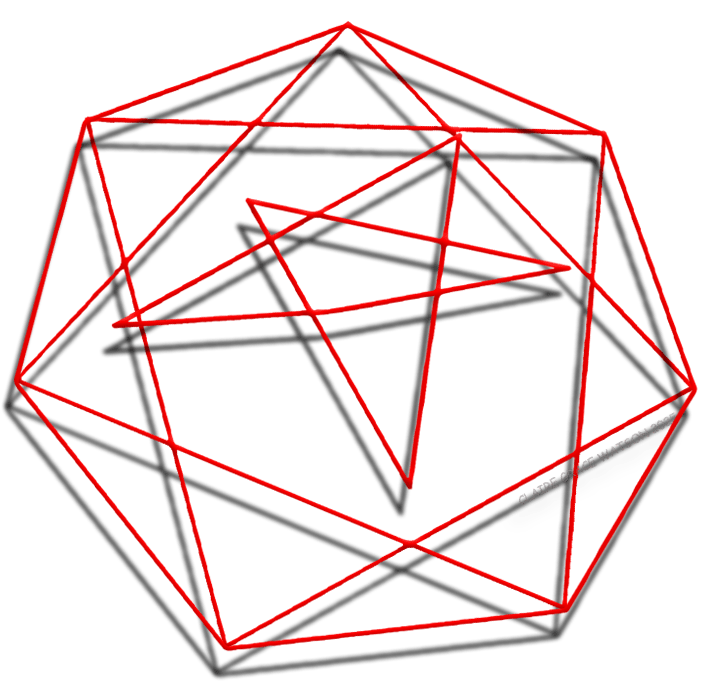

I found the mysterious Keys in the Enochian Language searching a book of ancient mysteries, a one-off design until I found it on the Phaistos Disk. I used the Keys design as a guide to connect the star image on the disk. The Keys has a fascinating and very mysterious origin, although it seems to me to have some kind of connection with the Phaistos Disk.
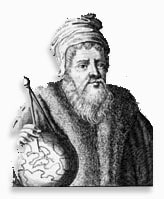 When Queen Mary of England,
Bloody Mary, imprisoned her half-sister Elizabeth in a nice country estate, Elizabeth was never sure that she would live to adulthood. In 1551, she
met the renowned scholar, traveler and astrologer John Dee (left) and asked him for a horoscope. Dee correctly predicted Elizabeth would rise to a high place
in the kingdom and live to old age and Queen Mary would die childless. When Elizabeth gained the throne of England, she made Dee court astrologer
and a wealthy man.
When Queen Mary of England,
Bloody Mary, imprisoned her half-sister Elizabeth in a nice country estate, Elizabeth was never sure that she would live to adulthood. In 1551, she
met the renowned scholar, traveler and astrologer John Dee (left) and asked him for a horoscope. Dee correctly predicted Elizabeth would rise to a high place
in the kingdom and live to old age and Queen Mary would die childless. When Elizabeth gained the throne of England, she made Dee court astrologer
and a wealthy man.
In 1581, Dee had an experience in which "there suddenly glowed a dazzling light, in the midst of which, in all his glory stood the great angel, Uriel." Uriel told Dee that if he would obtain a "shewstone" (crystal) and gaze into it, he could communicate with otherworldly beings. Dee complied but he never could see anything, so he hired a series of scryers, all unsuccessful until he hired Edward Kelley, an alchemist and Hermeticist who wrote Theater of Terrestrial Alchemy.
Kelly scryed into a black obsidian disk and said he saw an image in the crystal that hung there while he made a wax copy of it. Dee called the scryed image, "The Keys in the Enochian Language." He said it contained the language of angels and of the inhabitants of the Garden of Eden. Dee and Kelley believed it to be a pre-Hebraic language, which they learned to speak. Kelley would look into the crystal and see a "Spiritual Creature, like a pretty girl of seven or nine years of age." She called herself Madimi, and Dee named one of his daughters after her. The spirit Madimi pointed out to Kelley letters and symbols on the Keys design (beneath the scrying ball), and Kelley relayed the information to Dee.
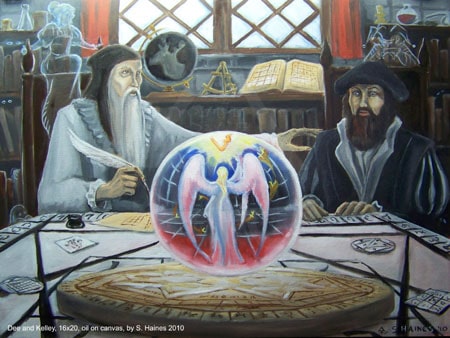
The Keys beneath the crystal ball looks like the Phaistos Disk. I think this artist saw my comparison of the disk to the Keys, which has been online since 1997, and made the Keys in this image look like the Phaistos Disk. Perhaps the artists' idea is that the Keys in the Enochian Language is actually the Phaistos Disk brought forward magically and mysteriously by this angel Madimi for Dee and Kelley. That was something I had wondered about as well. Thanks for the feedback :)
 Strange writing is associated with the Phaistos Disk as well. It was found with a Linear A tablet (left, but not the one actually found with the disk) containing an indecipherable script that is considered to be the precursor to the Linear B script, which has been deciphered. These scripts evolved into the Greek language alphabet. That both these pent/hept symbols, the Keys and the disk, would involve indecipherable scripts is another commonality they share. Resemblances are obvious on comparison of the symbols on the Keys in the Enochian Language with the symbols of Linear A (left), although it seems neither advances the other in terms of my understanding of what they mean. Maybe someone else would have better luck.
Strange writing is associated with the Phaistos Disk as well. It was found with a Linear A tablet (left, but not the one actually found with the disk) containing an indecipherable script that is considered to be the precursor to the Linear B script, which has been deciphered. These scripts evolved into the Greek language alphabet. That both these pent/hept symbols, the Keys and the disk, would involve indecipherable scripts is another commonality they share. Resemblances are obvious on comparison of the symbols on the Keys in the Enochian Language with the symbols of Linear A (left), although it seems neither advances the other in terms of my understanding of what they mean. Maybe someone else would have better luck.
Did Edward Kelley know about the Phaistos Disk? Not possible. Did he know about Minoan Crete? Not possible. Did he scry back in time and see the Phaistos Disk? Possibly. Did a mysterious etheric presence appear and import the Phaistos Disk image to them? Possibly. As for whether Minoan Crete could be considered the Garden of Eden, maybe so. Many people think it was Atlantis. And Linear A qualifies as a pre-Hebraic language. Will Linear "A" ever be deciphered? Will the Keys in the Enochian Language ever be understood? It is all very mysterious indeed.
At Phaestus we find a kind of prehistoric printing: the hieroglyphs of a great disk unearthed there from Middle Minoan III strata are impressed upon the clay by stamps, one for each pictograph; but here, to add to our befuddlement, the characters are apparently not Cretan but foreign; perhaps the disk is an importation from the East. (Will Durant referencing two writers, G. Glotz, Aegean Civilization, 1925, and Jas. Baikie, Sea-Kings of Crete, 1926.)
Is the legendary Argothic Language portrayed on the tablet (above) as Linear A? The Argothic
Language (Langue Argotique, Language of the Argos) is said to be the Secret Language of Jason and the Argonauts. Perhaps there is a
clue here as to the origin of Linear A when wordplaying the name
Jason to Jesus.
By those correlations, the language may be the "language of the angels."
Argothic Language, which may have been a type of picture writing, might have involved the Constellation Argos and other
ships of the sky (constellations) that seem to be revolving around the Pole Star and along the ecliptic. As the stars spin overhead, they
create relative positions that were plotted by seafaring Minoans in Crete. Many of these became the constellations we know today. Mariners at
Phaistos, Crete, probably dotted the location of each star and connected the dots with lines. The intersecting lines were an invisible matrix in
space. From this matrix came the constellations and the mariners' ability to predict the movement of the stars.
Perhaps from this matrix came the secret language, a mariners' language based on the movement of stars, star groups, and
constellations, that developed from their special knowledge and that perhaps they wore as skin tattoos. If so, this language, derived from early
nautical methods of keeping time and location while on the Aegean, is a dead language in the most literal sense. It perhaps was written as
skin tattoos worn by Minoan sailors, and when they died, it died with them. This could explain why no archaeological evidence of it can be
found save the Phaistos Disk, on which it was preserved.
But the perishable nature of the materials on which picture-writing, having for most part only a temporary value,
was usually wrought has been fatal to the survival of primitive European pictographs on any large scale. If we had before us the articles of bark
and hide and wood of early man in this quarter of the globe or could still see the TATTOO marks on his skin we should have a very different idea of
the part once played by picture-writing on European soil. As it is, it is right that the imagination should supply the deficiency of existing evidence.
Perhaps the Argothic Language was perceived as a gift from the gods who were also perceived to be residents of stars overhead
if not the stars themselves. The language of the stars was divinely given to the Argonauts, but only the mariners could understand it - the
language of the skin tattoos was the language of the stars - and they could, as a result of this great gift, navigate the ocean. They could
also keep track of daytime hours, nighttime hours, and the day and month if they had a version of the Phaistos Disk with them, a clay disk baked so
hard that the spray of salt water could not destroy it.
Therefore, the Argothic Language was not a spoken language, not a
written language, but was perhaps a picture writing language worn on the skin - as in the stars, so on the skin. It was a language that defined the
wearer as an Argonaut, a divine sailor bound to that which is above and that which is below - the ships of the stars on the rolling waves of Oceanus.
The Sunflower pictograph at the center of Side 1 on the Phaistos Disk may indicate influences of Egyptian theology on Minoan ideas. An identical flower pictograph is seen on this fragment of an Egyptian limestone relief. This Flower of Life is protected by the goddess Mut, a vulture-version of the goddess Isis, whose image Egyptians placed in tombs to protect the dead in their embryonic state of re-birth into the afterlife. Above Mut are the stars representing Sirius, the five-pointed star seen on the Phaistos Disk.
The Phaistos Disk star may be Sirius, seen in this Egyptian drawing in which it emanates a power through the connection with Horus that allows the soul of the mummy to fly to the star.
As we look at Sirius, we are looking at the future of our own solar system. And everything that ever happened in and around that star is
contained within the light
that escapes from it, bringing us the knowledge of the creation of the universe. Contained within its light is that knowledge and those values of creation and destruction. If starlight can inform us, then Sirius is sending us a mountain of data about the universe and the world around us. Thanks to our
chakra system, we can receive the enlightening data.
Sirius, a blue-white star 34 times brighter than our sun, with 8 times the mass, is 8.8 light years or 2.7 parsecs away in Canis Major. Sirius is traveling at unbelievable speeds and heading straight for us. If any star in the sky is our destiny, it is Sirius. It has two dwarf stars as companions, Sirius B (Horus) and Sirius C. Sirius is half a million times farther away than our sun.
In 1718, the astronomer Edmund Halley compared the position of Sirius with the position of background stars in the same field of view over time and discovered that it had moved. Beginning in 1834, the mathematician Friedrich Besel measured the exact position of Sirius night after night and discovered that Sirius does not travel in a straight line; it wobbles. He surmised that the wobble was caused by an invisible companion, Sirius B, orbiting around the star once every 50 years. The companion is a white dwarf star, a 'dead' star, as the astronomers say. Our sun will become a 'dead' star 5 billion years from now.
To find Sirius, first find the North Star Polaris which is directly north. Then, turn full around 180 degrees to face the south. Looking up you cannot miss Orion. It is a big constellation made up of bright stars of different colors. Identifying Orion is achieved by looking for three similar stars in a row which are Orion's belt. Follow the line of Orion's belt to the left to find the bright glow of Sirius, the brightest star in the night sky. At magnitude -1.5, Sirius is often mistaken for a planet but is rather a blue-white main sequence star (like I know what that means :-). Anyway, my experiments have found (just kidding) that its surface temperature of over 10,000 K, its luminosity 22 times that of the Sun, and its distance of only 8.8 light years from Earth make it the brightest star. (This is just general knowledge found on the net in a million places that I either cut and pasted or paraphrased.)
"The evidence as a whole however clearly pointed to Crete as the principal source of these hieroglyphic forms, and I therefore determined to follow up my investigations on Cretan soil. Landing at Candia early in March 1894, I made my way round the whole centre and East of the island, including the mountainous districts of Ida and Dikta, the extensive central plain of Messara and the sites of over twenty ancient cities. The number of relics illustrative of the prehistoric periods of Cretan culture that I was thus able to collect was surprisingly great, and in particular the evidence daily accumulated itself of the very important part played by the Mycenaean form of civilization in Cretan story. And, in what regarded the more special object of my quest, my researches were well rewarded by the discovery in situ of traces of a prae-Phoenician system of writing in the island, of which two distinct phases were perceptible, one pictorial and hieroglyphic, the other linear and quasi-alphabetic." Egyptian Influences on the Phaistos Disk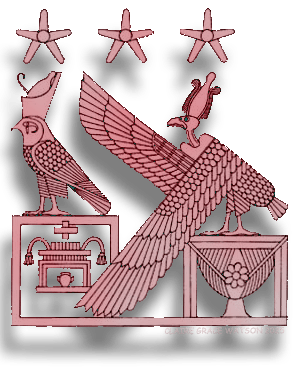


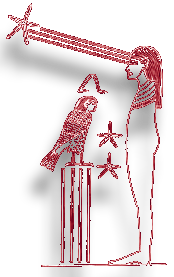 Star Sirius
Star Sirius
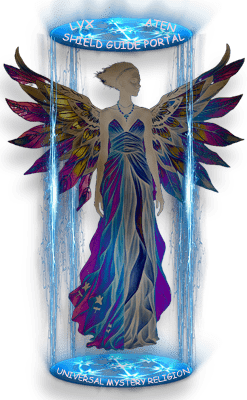 Copyright Notice - Disk of the World - Text and images copyrighted March 21, 1993-2025, Claire Grace Watson, B.A., M.S.T., U.S. Copyright and under the Digital Millennium Copyright Act of 1998, All rights reserved. No part of this web page may be reproduced or transmitted in any form or by any means without written permission from Author, except for the inclusion of brief quotations in a review.
Copyright Notice - Disk of the World - Text and images copyrighted March 21, 1993-2025, Claire Grace Watson, B.A., M.S.T., U.S. Copyright and under the Digital Millennium Copyright Act of 1998, All rights reserved. No part of this web page may be reproduced or transmitted in any form or by any means without written permission from Author, except for the inclusion of brief quotations in a review.